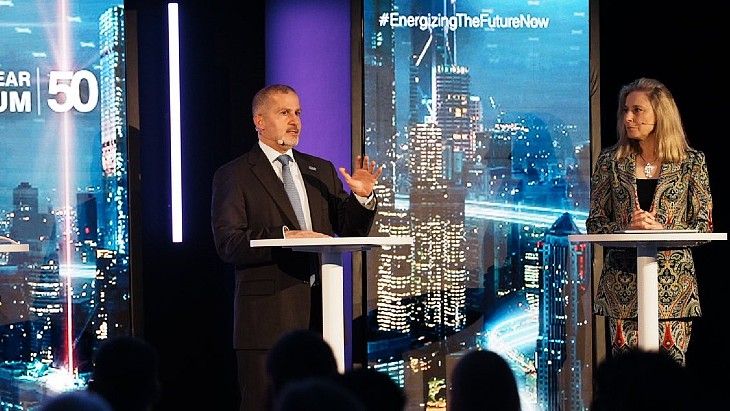The project - officially named Prosiect Egni Glan Llynfi and being developed by Last Energy UK Limited - becomes the first new site for a commercial nuclear power reactor to enter licensing since the Torness Advanced Gas Cooled Reactor plant in Scotland in 1978. All British deployments since then have been on, or adjacent to, sites with existing or former nuclear plants, Last Energy noted.
The company also said its entry into licensing also "underscores the viability of privately-financed projects, and puts the UK on a near-term path toward its first ever commercial nuclear microreactor".
An Office for Nuclear Regulation (ONR) spokesperson said: "We can confirm that Last Energy has entered our nuclear site licensing process. The licensing process is fundamental in ensuring that prospective licensees of a nuclear site are ready and able to meet their obligations under the nuclear site licence to protect their workforce and the public.
"Last Energy has been participating in our early regulatory engagement framework since May 2024, which enables applicants to develop their understanding of regulatory processes and expectations early on in their projects. Our inspectors will now provide pre-application advice to Last Energy as it prepares its application for a nuclear site licence. This advice will inform Last Energy of the regulatory expectations and legal responsibilities of a nuclear site licensee in Great Britain."
Michael Jenner, CEO of Last Energy UK, said: "We are pleased to officially enter site licensing with ONR, as we continue to make tangible progress toward the delivery of our first microreactor in Wales. This is another critical milestone necessary to unlock nuclear power at scale in the UK, which will help meet growing energy demand and alleviate grid restraints.
"We appreciate ONR's efforts during early engagement, which has allowed us to accelerate through the process swiftly. We also very much welcome that ONR has applied proportionality during their engagement with us, as this is a critical enabler for realising the benefits of SMRs."
Last Energy is a spin-off of the Energy Impact Center, a research institute devoted to accelerating the clean energy transition through innovation. Its reactor technology is based on a pressurised water reactor with a capacity of 20 MWe or 80 MWt. Power plant modules would be built off-site and assembled in modules.
A Last Energy plant, referred to as the PWR-20, is comprised of a few dozen modules that, it says, "snap together like a Lego kit". The PWR-20 is designed to be fabricated, transported, and assembled within 24 months, and is sized to serve private industrial customers. Under its development model, Last Energy owns and operates its plug-and-play power plant on the customer's site, bypassing the decade-long development timelines of electric transmission grid upgrade requirements.
In October last year, Last Energy announced plans for four microreactor power plants at the Llynfi site, for which it obtained site control that month. The Llynfi power station - a 120 MW coal plant - operated between 1951 and 1977. Following decommissioning in 1977, the 14-acre site has remained vacant. In December, the company received a letter of intent from the USA's Export-Import Bank for USD103.7 million debt financing relating to the Llynfi project. Last month, Last Energy accepted a grid connection offer from National Grid Electricity Distribution for 22 MW of export capacity.
Last Energy estimates the entire project represents a capital investment of GBP300 million (USD393 million), which will not require public funding. Contracts with local suppliers would amount to more than GBP30 million, while more than 100 full-time local jobs would also be created.
The company said it aims to deliver its first microreactor in Wales in 2027, pending the licensing, permitting, and planning processes.

_34412.jpeg)



_18570.jpg)
_18938.jpg)
_33584.jpg)
_82983.jpg)





